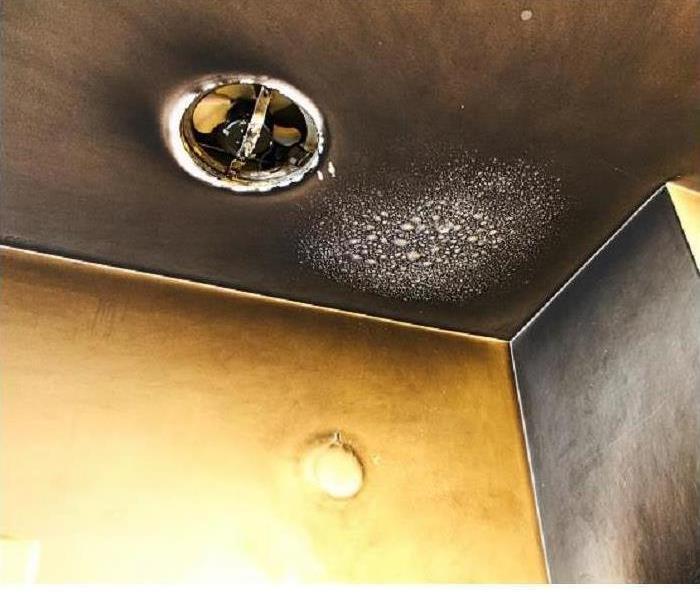New Haven Fire Restoration Relies on Understanding Smoke Damage
11/22/2022 (Permalink)
The Behavior of Smoke Impacts Fire Restoration
Our experience as FSRT-Certified technicians helps us understand the complex behaviors of fire loss effects like smoke. Knowing what to expect helps us build the best offense to restore post-disaster byproducts and make it "Like it never even happened."
Fire Loss Effects Spreading
Fire restoration for New Haven homes can be a widespread need, with loss effects moving quickly in available openings and pathways like the HVAC system. Since most homes have these connections open all the time to heat and cool the property, soot can be forced into many areas of the house.
The Turbulence of Smoke
A fire can create violent turbulence in your home's airflow, with convection currents created by the hot air replacing cooler air near the ceilings of rooms where fires occur. This smoke is under pressure, pushing debris and solids against vertical surfaces and ceiling assemblies that must get cleaned as part of the restoration process.
The Types of Smoke Damage
There are multiple types of smoke that SERVPRO professionals encounter when cleaning homes. Some of these include:
- Wet Smoke – Smoldering fires burn slowly and create a greater volume of thick and formidable smoke. Wet smoke deposits result, forming more challenging residues for restoration professionals to clean.
- Dry Smoke – Higher heat fires can cause thin, chalky residues on surfaces. These are among the easiest to manage and clean.
- Protein Residues – When fires occur in the kitchen, they are commonly caused by poorly managed cooking or bad practices around the stove. Protein residues can form a cakey and sticky deposit on cabinets and countertops.
- Oil Puffback – Connecticut homes use a variety of heating furnaces, including oil. When a small micro-explosion occurs in the ignition chamber from buildup, ionized soot can be rocketed through the ductwork and to the connected rooms.
When New Haven homes need fire restoration, there could be multiple causes. Understanding how smoke changes in different situations can help our SERVPRO of New Haven team provide the fastest and most reliable recovery service. Call us at (203) 234-1100.






 24/7 Emergency Service
24/7 Emergency Service